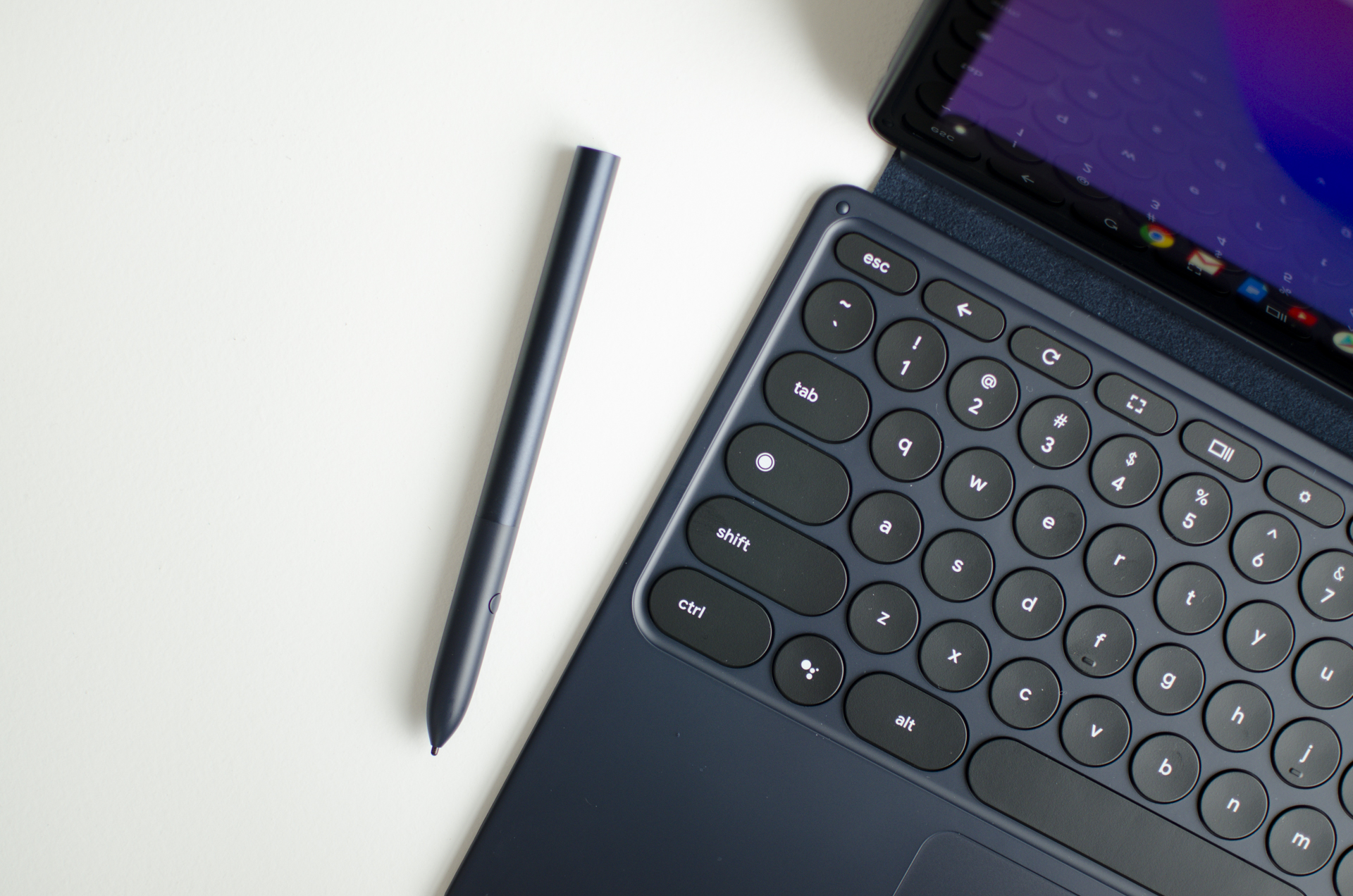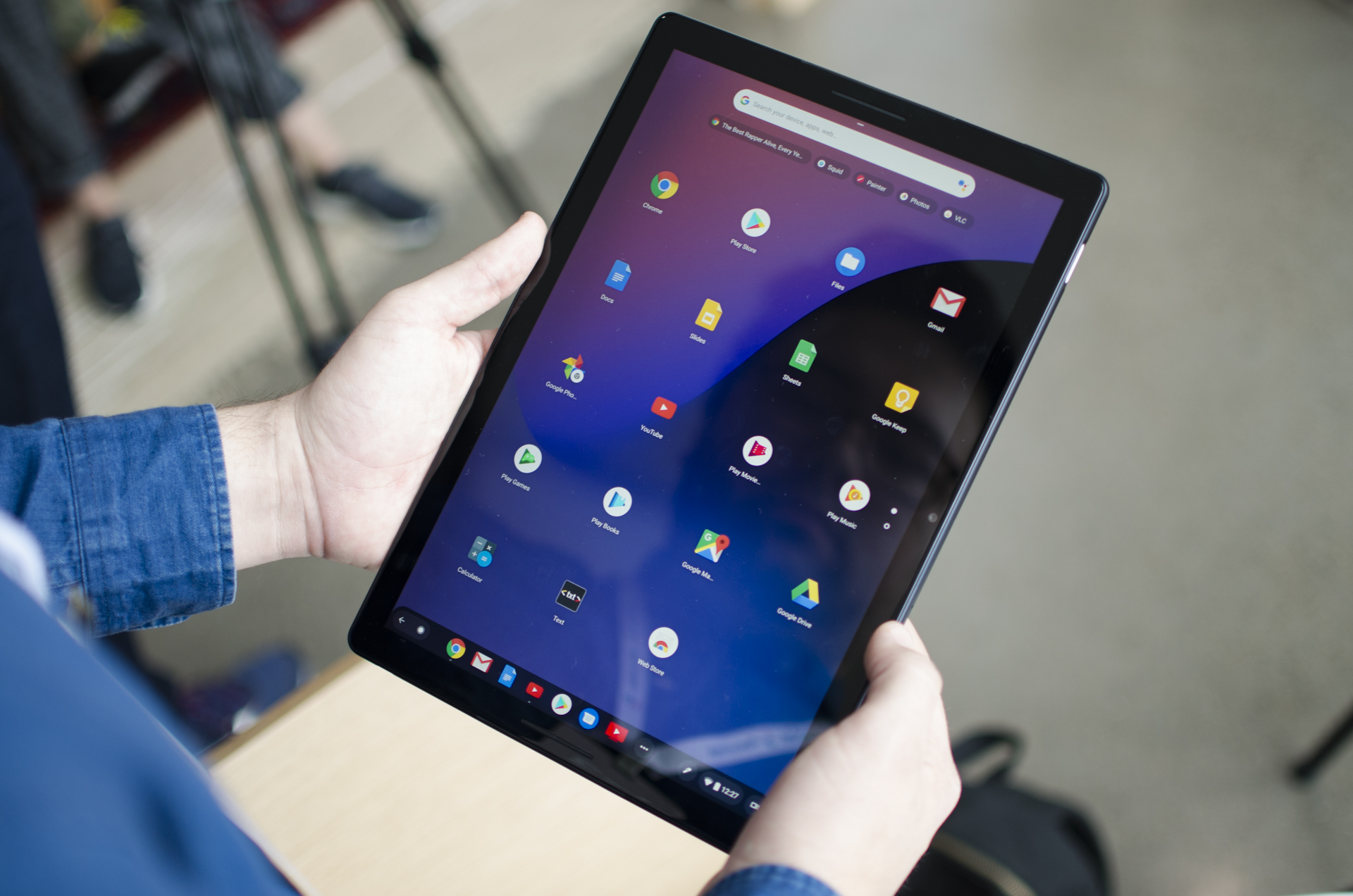
The Pixel family welcomed a new member on October 9: The Pixel Slate, a highly-rumored new Pixel tablet that uses Chrome OS and may provide a viable alternative to conventional Chromebooks. Here’s everything you need to know about about the Slate’s specs, design, and important features.
Pricing & Availability
After months of endless leaks and speculation, Google took the wraps off of its premium new Pixel Slate at a media event in New York City on October 9 alongside its flagship Android phones. But the company didn’t put a date on the Slate’s availability, saying only that it’ll be available “later this year” in the U.S., Canada, and U.K.
Following the Pixel Slate’s announcement, Best Buy’s pre-order pages for the tablet and its accessories originally indicated that a ship date of November 22, in time for the Thanksgiving holiday in the US and the busy Black Friday shopping rush. The date was at one point pulled from Best Buy’s website, but the current pre-order page again now shows free shipping, and seemingly confirms a “Release Day Thursday, November 22.”
At Best Buy, the pre-order price on the Intel Core m3 64 GB Pixel Slate starts at $800. Pricing rises from there to $1,000 for the midrange model, and then $1,600 for the top-tier model. The keyboard is $200 and the pen is $100, but both accessories are optional and not included in the base price. Unfortunately, the cheaper $600 entry-level Pixel Slate with Intel Celeron processors aren’t available for pre-order at Best Buy, and could likely instead appear on the Google Store once a release date is more official.

The long stretch between the Pixel Slate’s product announcement in early October to its rumored availability date in November may be due to regulatory hurdles. At this time, Google’s online store noted that the device has not gained FCC approval in the United States. “This device has not been authorized as required by the rules of the Federal Communications Commission,” Google said. “This device is not, and may not be, offered for sale or lease, or sold or leased, until authorization is obtained.”
A quick Google search, however, generated a Google card noting the tablet will be released in November, though an exact date was not given. The Google search card contained a link to Google’s online store for additional information about the product. Now that Chrome OS 70 is out, the Pixel Slate will be able to take advantage of some of the newer tablet-centric features once it ships in November.
A thin and simple design

The Google Pixel Slate has a simple, thin design with rounded edges and comes only in midnight blue. It’s a tablet at its core, unlike the Pixelbook, with the Pixel Slate keyboard sold as an expensive ($200) extra. Since it’s a tablet first, the design of the device isn’t too remarkable, but it fits nicely into Google’s prevailing design language. It’s simple, but inviting.
According to Google’s official specifications, the Pixel Slate is just seven millimeters thin, 202 millimeters tall, and 290 millimeters wide. That’s remarkably thin given its overall dimensions. It weighs 1.6 pounds, which is comparable to a Surface Pro and a bit more than the most recent iPad.
Technical Specifications
- Display size: 12.3-inch
- Thickness: 7mm (without keyboard)
- Weight: 1.6 pounds (without keyboard)
- Processor: Intel Celeron up to 8th-gen Intel Core i7
- RAM: 4GB up to 16GB
- Storage: 32GB up to 256GB
- Screen resolution: 3,000 x 2,000 (293 pixels per inch)
- Audio: Dual front-firing speakers
- Battery: 48 watt-hour
- Ports: 2 USB-C, Pixel accessory connector
- Camera: 8MP with wide FOV
The Pixel Slate Keyboard is an optional add-on. It’s a folio style, which means it connects to the base of the tablet and then folds over it to provide protection. Strangely, Google has opted to use round keys for the keyboard — an odd choice rarely seen on mainstream keyboards. The keyboard is backlit.
Google’s Pixel Pen also returns, but the company didn’t say anything about changes to its design aside from a new midnight blue color that matches the Pixel Slate.
The display is a doozy

Google made the Pixel Slate’s display a focus during its reveal, going so far as to include a small video where it spoke to creators about how the Pixel Slate did justice to their work. Google apparently hopes that owners will use the Slate to watch high-quality video content on Google.
That said, the display isn’t surprising. It offers a 12.3-inch screen with 3,000 × 2,000 resolution, which means it has a 3:2 aspect ratio similar to Microsoft Surface devices. The resolution works out to 293 pixels per inch, or 6 million pixels overall.
Overall, the Pixel Slate is comparable to many of its competitors and is directly comparable to the Microsoft Surface Pro.
No specification surprises

Buying the basic $600 version of the Pixel Slate will net you an Intel Celeron dual-core processor, 4GB of
These internals aren’t a big surprise. They’re basically the same as you’ll find in the Microsoft Surface line, or in other 2-in-1s like the Dell XPS 13 2-in-1. We doubt they’ll be much performance gap between the Pixel Slate and its peers, though the Pixel Slate’s unique operating system will make direct comparisons difficult.
A new version of Chrome OS

There was a lot of speculation about what the Pixel might run ahead of Google’s event. In the end, it appears Google has decided to update the existing Chrome OS with a new look.
Since it’s a tablet, the new design is focused on touch use. It looks a lot like Android, with rounded icons, big buttons, and heavy use of large grid-like menus to provide easier navigation.
The new version of Chrome OS boasts a few other features focused on security. That includes built-in virus protection, automatic background updates that ensure the OS is always up to date, and Google’s Titan security chip, which helps prevent hackers from hijacking the device.
Editors' Recommendations
- Google is changing everything you know about Chromebooks
- Be honest. The new MacBook Pro looks great, but you don’t need it
- MacBook Pro 2020: Everything you need to know about Apple’s next laptops
- Surface Neo: Everything you need to know about Microsoft’s first dual-screen PC
- Pixelbook 2: Everything we know so far about Google’s next laptop


